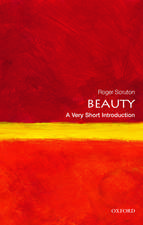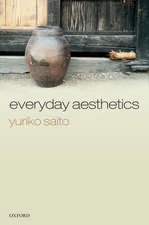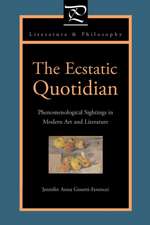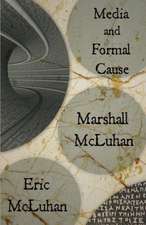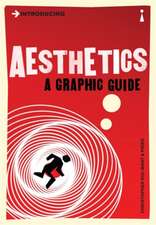A History of Six Ideas: An Essay in Aesthetics: Melbourne International Philosophy Series, cartea 5
Autor W. Tatarkiewiczen Limba Engleză Paperback – 13 oct 2011
Preț: 835.11 lei
Preț vechi: 1018.43 lei
-18% Nou
Puncte Express: 1253
Preț estimativ în valută:
159.80€ • 167.18$ • 132.75£
159.80€ • 167.18$ • 132.75£
Carte tipărită la comandă
Livrare economică 02-16 aprilie
Preluare comenzi: 021 569.72.76
Specificații
ISBN-13: 9789400988071
ISBN-10: 9400988079
Pagini: 400
Ilustrații: 400 p.
Dimensiuni: 155 x 235 x 21 mm
Greutate: 0.56 kg
Ediția:Softcover reprint of the original 1st ed. 1980
Editura: SPRINGER NETHERLANDS
Colecția Springer
Seria Melbourne International Philosophy Series
Locul publicării:Dordrecht, Netherlands
ISBN-10: 9400988079
Pagini: 400
Ilustrații: 400 p.
Dimensiuni: 155 x 235 x 21 mm
Greutate: 0.56 kg
Ediția:Softcover reprint of the original 1st ed. 1980
Editura: SPRINGER NETHERLANDS
Colecția Springer
Seria Melbourne International Philosophy Series
Locul publicării:Dordrecht, Netherlands
Public țintă
ResearchCuprins
one. Art: History of the concept.- I. The early concept of art.- II. The transformation in modern times.- III. The fine arts.- IV. New disputes over the scope of art.- V. Disputes over the concept of art.- VI. Renunciation of definition.- VII. An alternative definition.- VIII. Definition and theories.- IX. The present.- two. Art: History of classification.- I. Division of all the arts (Antiquity).- II. Division of the liberal and mechanical arts (Middle Ages).- III. Search for a new division (Renaissance).- IV. Division of the arts into fine and mechanical (The Enlightenment).- V. Division of the fine arts (Recent times).- three. Art: History of the relation of art to poetry.- I. Our concepts of art and Greek concepts.- II. The concept of art.- III. The concept of poetry.- IV. The concept of beauty.- V. The concept of creativity.- VI. Apate, Ratharsis, mimesis.- VII. Plato: Two kinds of poetry.- VIII. Aristotle: First approximation of poetry to art.- IX. Hellenism: Second approximation of poetry to art.- X. The Middle Ages: Renewed separation of poetry and art.- XI. Modern times: Final approximation of poetry to art.- XII. New separation of poetry and painting.- four. Beauty: History of the concept.- I. The evolution of the concept.- II. The Great Theory.- III. Supplementary theses.- IV. Reservations.- V. Other theories.- VI. Crisis of the Great Theory.- VII. Other eighteenth-century theories.- VIII. After the crisis.- IX. Second crisis.- X. In conclusion.- five. Beauty: History of the category.- I. The varieties of beauty.- II. Aptness.- III. Ornament.- IV. Comeliness.- V. Grace.- VI. Subtlety.- VII. Sublimity.- VIII. A dual beauty.- IX. Orders and styles.- X. Classical beauty.- XI. Romantic beauty.- six. Beauty: the dispute between objectivism and subjectivism.- I. Antiquity.- II. Middle Ages.- III. Renaissance.- IV. Baroque.- V. The Enlightenment.- seven. Form: History of one term and five concepts.- I. History of form A.- II. History of form B.- III. History of form C.- IV. History of form D (Substantial form).- V. History of form E (A priori form).- VI. History of other forms.- VII. New concepts of form.- eight. Creativity: History of the concept.- I. Art seen without creativity.- II. History of the term.- III. History of the concept.- IV. Creatio ex nihilo.- V. Contemporary concept of creativity.- VI. Pancreationism.- VII. The artist’s creativity.- nine. Mimesis: History of the relation of art to reality.- I. History of the concept of ‘mimesis’.- II. Other theories of the past.- III. Some history of the concept of realism.- ten. Mimesis: History of the relation of art to nature and truth.- I. Art and nature.- II. Art and truth.- eleven. The aesthetic experience: History of the concept.- I. Early history.- II. Age of the Enlightenment.- III. The last hundred years.- IV. The legacy.- Conclusion.- Index of names.









